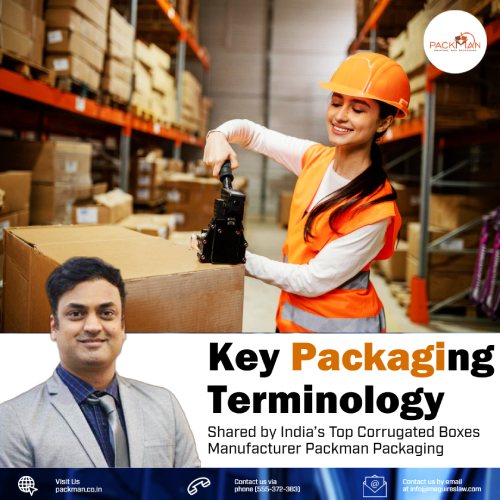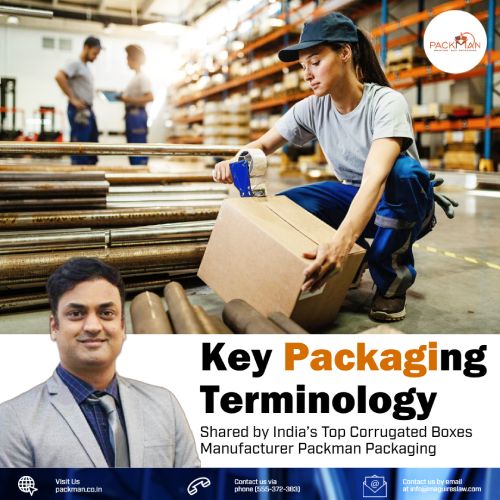Insights Shared by India’s Top Corrugated Boxes Manufacturer Packman Packaging
In today’s dynamic and competitive global marketplace, understanding packaging terms is crucial for several reasons. Firstly, it empowers consumers to make informed choices about the products they purchase, such as identifying recyclable or eco-friendly packaging. Secondly, businesses benefit from knowing packaging terminology to effectively communicate their offerings, differentiate themselves, and comply with regulatory standards. Ultimately, familiarity with packaging terms promotes sustainability, consumer awareness, and industry innovation.
To navigate the ever-evolving landscape of packaging, it is essential for manufacturers to be familiar with key packaging terms. In this article, Packman Packaging India’s leading wholesaler of corrugated boxes for e-commerce and retail businesses will explore a few packaging terms that every product manufacturer should be aware of. Understanding these terms will empower manufacturers to make informed decisions and optimize their packaging strategies.
Primary Packaging:
It refers to the immediate enclosure of a product, acting as the first layer of protection and presentation. It comes into direct contact with the product, ensuring its integrity, safety, and appeal. It can take various forms, including bottles, jars, tubes, or blister packs. Think of a high-end skincare product, beautifully presented in an elegant glass jar. The primary packaging not only protects the product from external factors but also conveys brand values, influences consumer perception, and enhances the overall user experience.
Structural packaging:
It refers to the design and construction of three-dimensional packaging that encompasses the physical form, shape, and functionality of the packaging itself. Structural packaging combines aesthetics with practicality to create unique and functional solutions. Imagine a beverage company developing a new bottle design with a unique ergonomic shape that not only enhances the visual appeal but also improves grip and convenience for consumers. Professionals skilled in structural packaging understand how to harmonize form and function to create impactful packaging solutions.
Prototypes:
Prototypes, sometimes called “blank dummies” are the tangible manifestations of innovative ideas and designs. They serve as models that allow packaging professionals to test and refine their concepts before final production. For instance, an electronics manufacturer may create a prototype of a new smartphone packaging design to evaluate its functionality, aesthetics, and user experience. By experimenting with prototypes, professionals can ensure their packaging solutions align with their client’s expectations and meet market demands.
Secondary Packaging:
This serves as an additional layer of protection and branding for the primary package. It includes cartons, boxes, or shrink wrap that groups and transports multiple primary packages together. Consider a set of toy building blocks, where the individual blocks are packed in colourful boxes, and these boxes are then bundled in a larger carton. Secondary packaging not only facilitates logistics and transportation but also provides an opportunity for branding, product information, and promotional messages.
Sustainable packaging:
This involves eco-friendly materials and designs that minimize environmental impact. It appeals to conscious consumers and provides a competitive advantage through biodegradability, waste reduction, and renewable energy use.
Shelf-ready packaging:
Also known as retail-ready packaging, it is designed to optimize product placement and stocking efficiency in retail environments. This type of packaging is easily displayed on store shelves, making it convenient for retailers to replenish stock and for consumers to identify and access the product. Examples of shelf-ready packaging include pre-packaged trays or boxes with easy tear-away sections, ready for immediate display.
The Universal Processing Code (UPC):
This is a standardized barcode system used for product identification and inventory management. It comprises black and white bars with corresponding numbers, enabling accurate tracking, efficient checkouts, and seamless integration with inventory systems.
Embracing packaging innovation and staying informed about industry trends will help manufacturers create packaging solutions that meet the demands of today’s consumers while delivering their products effectively and efficiently.





